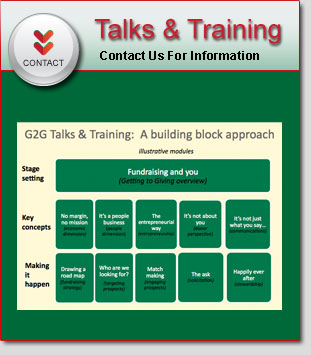By Deborah J. Sinay
I’ve worked with many nonprofits to help create and launch new development, branding and communications plans. While each organization is unique, they all share a singular challenge. They must develop two communication plans, not one … an internal and an external plan. And no matter how big or small the nonprofit, each must articulate the fundamental goals, values and purpose of the organization using “simple” language that communicates the fundamental proposition that every stakeholder or potential stakeholder is being asked to embrace. This is the secret sauce that is essential to achieving your goals in a timely, effective and efficient manner.
Here’s how:
 First, the audiences. The internal communications plan is for “everyone” involved in your institution. This includes all staff and board members who have been or will be involved in conceptualizing, developing and implementing the project, as well as, ambassadors, planning team members, volunteers, and other engaged stakeholders. An internal communications strategy for institutional advancement is a core effort that should be led by a senior manager. He or she will advance the planning efforts, use traditional communications vehicles, such as email, newsletters and employ social media to keep all stakeholders apprised of the overall progress.
First, the audiences. The internal communications plan is for “everyone” involved in your institution. This includes all staff and board members who have been or will be involved in conceptualizing, developing and implementing the project, as well as, ambassadors, planning team members, volunteers, and other engaged stakeholders. An internal communications strategy for institutional advancement is a core effort that should be led by a senior manager. He or she will advance the planning efforts, use traditional communications vehicles, such as email, newsletters and employ social media to keep all stakeholders apprised of the overall progress.
The external communication plan is for anyone who hasn’t been involved, but who you want and need to be. Individuals, foundations, business leaders, educators, community leaders, policymakers, media and other funders who might be interested in learning more about your project will be invited to join the journey with you. Through good planning you may also be able to include those who might be initially opposed to your efforts. You just might inspire them with your clear messaging.
Now, the messages.
Mission-driven institutions are inherently values-oriented organizations. Academic institutions value education, research and public service. Cultural institutions value creativity, learning and community. Many nonprofits fail to articulate their values clearly and consistently. Clarifying your value proposition, if done well, will engender passionate engagement, loyalty and commitment.
Framing is the key to defining your value proposition (e.g., New England Center for American Veterans provides returning veterans with the tools to lead independent lives). Think of a “frame” as the box within which you work, the parameters of your mission and the articulation of your purpose for existence. It should identify the target of your work, (e.g., homeless veterans living in shelters) the issue to be addressed (homelessness) and the goal (independent lives). And like a good elevator pitch, it needs to be short, easily understandable (simple) and instantly compelling. Policy jargon such as, “subsidized housing” should be avoided. Politically loaded terms such as “needy constituents” only serve to polarize and narrow your stakeholders. Positive framing that emphasizes broad benefits around shared values will always increase engagement. Choose your words carefully, make them as specific as possible to your mission and target them clearly to get the results you want. Don’t be afraid to show how much passion you have for the mission of your organization.
The frame should be the same for your internal and external communication plans. It is the glue that binds them together. But different key messages should be developed for your different audiences. You will need to identify the willingness of each audience to engage with these messages. What matters to them? What worries them? What makes them proud? What makes them feel good about themselves? A crucial realization in developing your plans is that they are not about your organization. Rather, they are about your target audiences, getting people aligned with your mission. Your internal audiences are already committed but need clarity of purpose, passionate motivation and straightforward, measurable goals. Your external audience needs persuasion, convincing, competitive positioning within the larger community of philanthropic organizations and meaningful paths to impact.
The power of the right words in developing your plans cannot be underestimated. Using simple language doesn’t mean simple ideas! Lots of words can trigger an unwanted response. Never, always, forever will often turn away your audience. Collaborate, purpose, advance, fun, are words that engage audiences. Be concrete. Be on point. Be rational. Be logical. Be emotional. Be values driven…bottom line – Every word counts to frame your proposition, target your internal and external messages and engage your audiences.
Nonprofit communication has become an art form. It is the path from purpose to action. Don’t be afraid to seek outside help in framing and communicating your plans. A simple, straightforward analysis of your plans can make a meaningful difference.
The takeaway: Say what you mean, mean what you say…it’s easier said than done.



